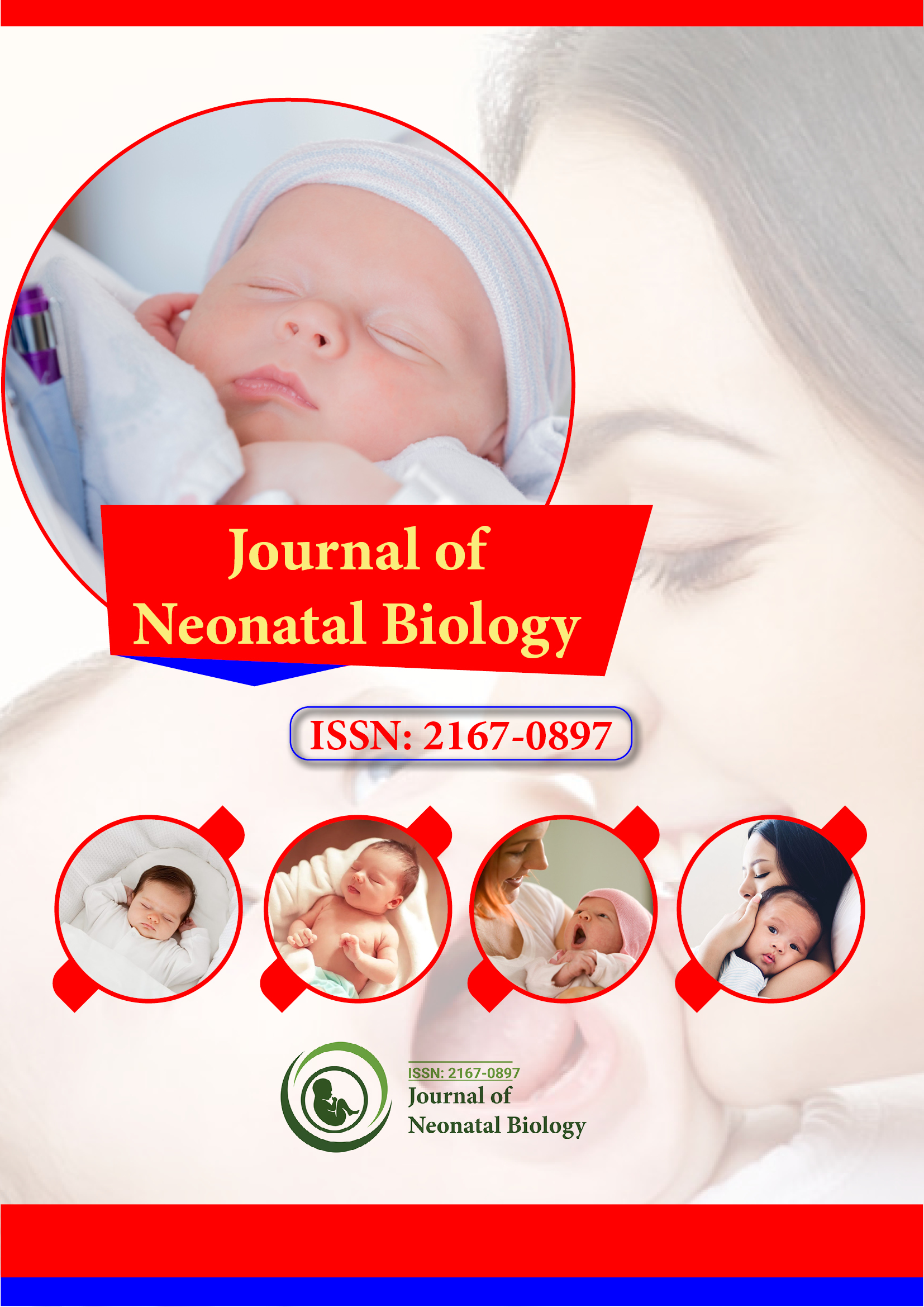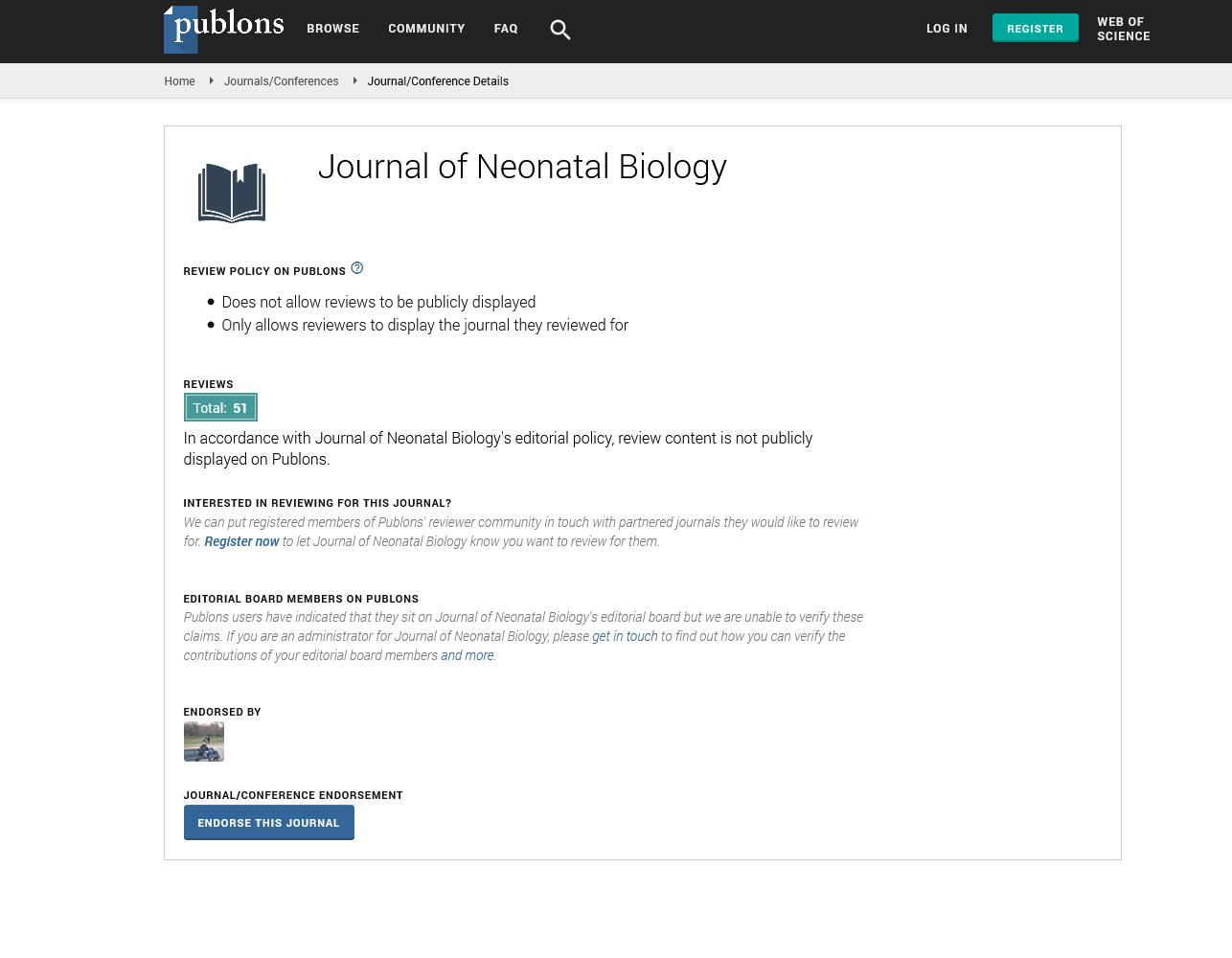Indexed In
- Genamics JournalSeek
- RefSeek
- Hamdard University
- EBSCO A-Z
- OCLC- WorldCat
- Publons
- Geneva Foundation for Medical Education and Research
- Euro Pub
- Google Scholar
Useful Links
Share This Page
Journal Flyer

Open Access Journals
- Agri and Aquaculture
- Biochemistry
- Bioinformatics & Systems Biology
- Business & Management
- Chemistry
- Clinical Sciences
- Engineering
- Food & Nutrition
- General Science
- Genetics & Molecular Biology
- Immunology & Microbiology
- Medical Sciences
- Neuroscience & Psychology
- Nursing & Health Care
- Pharmaceutical Sciences
Perspective - (2022) Volume 11, Issue 12
The Complications of Osteomyelitis and Amniotic Band Syndrome in Newborn
Lisa Saiman*Received: 25-Nov-2022, Manuscript No. JNB-22-19617; Editor assigned: 28-Nov-2022, Pre QC No. JNB-22-19617(PQ); Reviewed: 14-Dec-2022, QC No. JNB-22-19617; Revised: 21-Dec-2022, Manuscript No. JNB-22-19617(R); Published: 29-Dec-2022, DOI: 10.35248/2167-0897.22.11.384
Description
A collection of congenital abnormalities is known as Amniotic Band Syndrome (ABS). Other names for this disorder include ABS, Streeter's dysplasia, and Amniotic Band Sequence (ABS). Several fibrotic amniotic bands cause these congenital abnormalities. The foetal body components in ABS with multifactorial aetiology have deformities as a result of the amniotic band wrapping around them, leading to foetal structural abnormalities and dysfunctions. In the absence of visible bands, the diagnosis is typically made by abnormalities that are consistent with amniotic bands (such as limb deformities). Fetal Ultrasound (US) scans are mostly used to diagnose ABS during pregnancy. But with conventional prenatal imaging, like as ultrasound and MRI, it is challenging to spot the amniotic bands. Fetal Ultrasound scans are mostly used to diagnose ABS during pregnancy. But with conventional prenatal imaging, like as ultrasound and MRI, it is challenging to spot the amniotic bands.
Amniotic bands that wrap around the extremities of the developing baby can result in deformity or amputation of the afflicted limbs, while more complicated bands that involve the abdominal wall can produce significant abdominal wall deformities that mimic gastroschisis or omphalocele. According to research, hydranencephaly, porencephaly, craniofacial anomalies, and spinal dysraphism are all linked to amniotic band syndrome. Most occurrences are sporadic, and affected patients' siblings do not experience recurrence. Karyotyping is crucial when discussing the risk of recurrence with the parents. Neonatal patients require a customised multidisciplinary approach. Amniotic bands that are restricted to the extremities continue to be the principal reason for fetoscopic band removal. There currently doesn't seem to be any need for foetal intervention in cases where the bands are interrupting other anatomical regions because they have typically caused permanent abnormalities at the time of diagnosis. Post-natal surgical repair is recommended in specific circumstances. As a result of trauma or surgery, direct inoculation as a result of bacterial infections is less typically the cause of osteomyelitis in newborns. Bone pain, swelling, redness, guarding, and immobility of the affected body region are common symptoms (pseudoparalysis). The pathogens that cause disease vary by country, but Staphylococcus aureus, which is present in 70%-90% of cases where a culture was positive, is the most frequent pathogen. Other cases are caused by Streptococcus, primarily group B, and Gram-negative enteric bacteria like Escherichia coli, Klebsiella pneumonia, and Pseudomonas aeruginosa. Typically, acute haematogenous OM is described as acute if the signs or symptoms last fewer than 14 days and subacute or chronic if they last longer than 14 days. To determine the location of an infection, the presence of liquid collections for diagnostic aspiration and/or biopsy, to distinguish a unifocal from multifocal disease, and to identify current or impending complications, such as joint or extradural involvement, imaging (Computed Tomography (CT) scan, radiography, bone scan, US and/or MRI) is used.
Depending on where the bands are constricting and how tightly they are coiled, each instance is unique, numerous strands may be entangled around the foetus, and the severity can range from moderate to life-threatening.
To determine the severity and prevent a false positive, a thorough ultrasound examination should be performed if there is indication of amniotic bands. Because of their small size, amniotic bands can be challenging to identify by ultrasound, therefore it's crucial to have their case assessed by an expert in amniotic band syndrome. The problem is often identified indirectly by the constrictions and swelling they cause to limbs and other regions of the foetal body because the individual strands are frequently difficult to identify on an ultrasound.
In babies, acute hematogenous osteomylitis progresses quickly. The accurate diagnosis is frequently made after severe harm to growth centres and joint components has already occurred. Normal body temperature and a lack of any widespread infection-related symptoms can be deceiving. An infant's irritability and any swelling, soreness, or loss of function in an extremity should raise suspicions for this illness. There isn't much debate over how to manage a sick infant in general, but there is currently a propensity to ignore local bone and joint lesions. Pyarthrosis of the hip causes cartilage to be rapidly destroyed by intra-articular strain and the lytic action of pyogenic exudate, which disrupts the joint, causes pathological dislocation, and causes significant growth abnormalities that lead to severe crippling. Internal rotation was discovered to be necessary in those dislocated hips that were later detected during open surgery in order to insert the remaining components of the proximal end of the femur into the acetabulum. The main problem with modern medicine is how slowly localised abscesses are surgically drained, especially when the hip joint is involved. According to research on this group of cases, early surgical drainage, followed by traction in abduction and especially with internal rotation, would have decreased cartilage absorption and maybe spared some of these hips.
The substantial bone blood supply in newborns prevents many of the symptoms of chronic osteomyelitis, and the inner layer of the periosteum's effective vasculature promotes early development of new bone formation. Cortical sequestra are frequently entirely absorbed as a result. Joint destruction in its entirety is uncommon; however severe growth disturbances can happen. Although it's a rare complication, neonatal osteomyelitis nevertheless presents a diagnostic and treatment difficulty and puts the newborn at a significant risk for long-term morbidity. In order to aid early diagnosis and rapid implementation of appropriate therapy, osteomyelitis should be taken into consideration in newborn infants presenting with clinical indications of sepsis but lacking an evident focus.
After delivery, a foetus with amniotic bands syndrome can need medical attention. The treatment of deep constriction grooves, fused fingers or toes, cleft lips, or clubbed feet may occasionally require reconstructive surgery. Depending on the severity of the malformations brought on by the amniotic bands, their child may require simple surgery or more involved procedures.
Citation: Saiman L (2022) The Complications of Osteomyelitis and Amniotic Band Syndrome in Newborn. J Neonatal Biol. 11:384.
Copyright: © 2022 Saiman L. This is an open-access article distributed under the terms of the Creative Commons Attribution License, which permits unrestricted use, distribution, and reproduction in any medium, provided the original author and source are credited.

